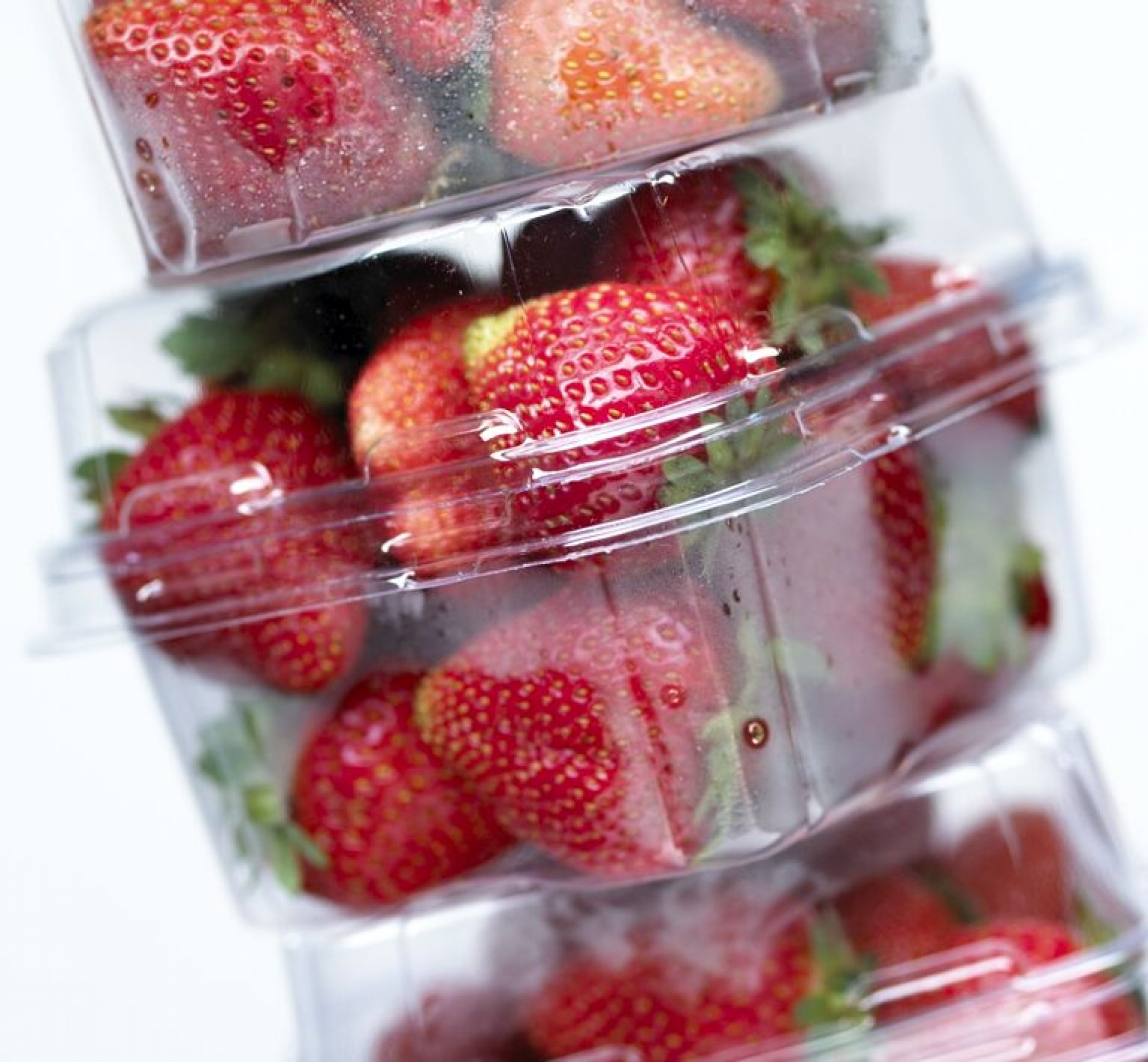PVC (vinyl) packaging - designated by the Plastics Identification Code number 3 - is recyclable.
Vinyl has long been used on a global basis to meet specific functional food and beverage packaging needs. It offers users excellent clarity, unsurpassed physical properties including heat tolerance, controllable gas and moisture vapour transmission capabilities and exceptional sealing performance. Unlike many other materials, Vinyl can be formed into a myriad of complex and functional forms to suit many different food types.
Most vinyl (>85%) is used in long life products, particularly building products, such as potable water pipe, conduit, cabling, flooring and window profiles, all of which are also recyclable in Australia. Vinyl used in packaging represents approximately 5 percent of the material’s usage in Australia.
Vinyl packaging is commonly used for clear, handled bottles such as for cordials; clamshells to protect fresh fruit, vegetables, bakery and other fresh food items; and as very light gauge film for wrapping and protecting fresh meat, produce, dairy and deli products. Vinyl plays an important role in keeping fresh food fresh, and in turn benefits consumers by protecting the fresh food from early spoilage or other forms of undesirable food contamination.
Vinyl is also used as secure blister packaging for high value products such as pharmaceuticals, batteries, razors, toys, and an array of other consumer products. An important material for healthcare, Vinyl is used in many critical medical items, such as intravenous fluid bags and body fluid hoses, used in the delivery and management of blood and other fluids in operating theatres and similar critical care situations.
Post-consumer PVC packaging is collected by most local councils around Australia and by industry directly from the healthcare system. It can be sorted into a defined stream, can be reprocessed and used as recyclate for use in new products manufactured in Australia. However, at just over five percent, vinyl packaging is only a small proportion of all plastic packaging materials (industrial and consumer) used in Australia.
The 2017-18 recycling rate of PVC packaging waste in Australia is reported to be 7.2% - which is low when compared to the overall average rate of 20.6% for all plastic packaging. (Source - 2017-18 Australian Plastics Recycling Survey published by Envisage Works, 30 January 2019).
Clean, separated vinyl waste has value and collection is actively encouraged by industry.
Rigid vinyl packaging
Rigid vinyl packaging such as bottles and thermoformed packaging is recyclable when collected from kerbside and sorted from other polymers and packaging materials. Most councils around Australia have included these products in collections for many years.
Post-consumer vinyl bottles are separated out where manual sorting systems operate at Materials Recovery Facilities (MRFs) and sent to recyclers. The Vinyl Cycle bottle recycling program that operated for many years (until 2012) demonstrated that a recycling rate of over 50% was achievable when vinyl bottles were manually sorted for recycling, however very few MRFs operate such systems today.
Optical sorting technologies exist based on Near InfraRed cameras that can identify polymer types, including vinyl, and colours (except black). These achieve high purity streams, generally 93-96% for most polymers. In Australia, however, use of such technologies has largely been limited to identifying the dominant two packaging polymers only – PET and HDPE – despite local demand for recovered vinyl for remanufacturing within Australia.
Post-industrial rigid vinyl packaging materials, such as thermoforming web scrap, is sought after by recyclers for use in other products.
Flexible vinyl packaging
A successful program currently operates across Australia’s healthcare sector. The ‘PVC Recycling in Hospitals’ scheme operates in over 170 healthcare facilities in Australia and New Zealand and collects approximately 15-20 tonnes a month of vinyl intravenous bags, tubing and oxygen masks. This material is reprocessed locally into new, long-life products. The success of the program is, in part, due to the separation at source of the vinyl products, reducing contamination from other polymers and materials.
Unfortunately, there is little collection and recycling of post-consumer films and food wrap, regardless of polymer type. This is due to a number of reasons - high contamination from dirt, food waste and other non-plastic materials and contaminants; the wide range of polymers and other materials used to manufacture films, such as mono layer, multilayer and mixed polymer films; and the risk of films generally entangling and damaging traditional processing equipment at the MRF.
Nevertheless, the vinyl film industry in Australia has taken appropriate actions to reduce raw material use through down-gauging films and continually seeking ways to reduce the life cycle footprint of these products by way of material selection.
Benefits of sorting and recycling vinyl packaging
Clean, separated vinyl waste is relatively easy to recycle as vinyl is a thermoplastic. Vinyl’s melting point is relatively low which means less energy is required for reprocessing vinyl than that of other polymers, but this has been the reason it is considered a ‘contaminant’ in other polymer streams as it burns at higher temperatures.
Industry does not see vinyl as a contaminant; we see it as a resource. There is very good reason therefore to implement technologies and systems to separate vinyl early in the kerbside waste sorting process.
Using recycled vinyl in new products replaces the use of virgin vinyl compound and reduces the carbon emissions associated with manufacturing virgin vinyl by about 80-85 percent. This significantly lowers the carbon footprint of new vinyl products.
Local manufacturers of vinyl products have indicated that they have an appetite to increase the use of vinyl recyclate if reliable, continuous sources of recyclate are made available. Signatory companies to the long-established PVC Stewardship Program are publicly committed to use recyclate in the products they supply to the market unless product standards prohibit it.
The Council therefore welcomes emerging initiatives by MRFs to separate rigid vinyl packaging and some other flexibles for local reprocessing and reuse in Australia.







